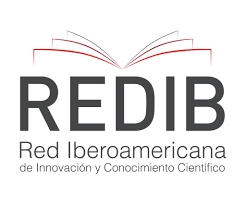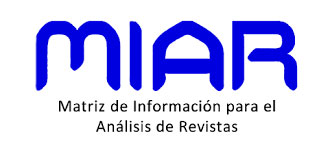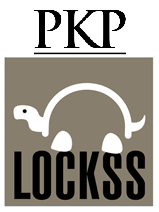Being I: Between Neuroscience and Morality
DOI:
https://doi.org/10.51743/cpe.404Keywords:
Dennett, metaphors, moral center, neuroscience, responsability, selfhood, SethAbstract
Anil Seth, in his book Being I, recently translated (as La creación del yo), intends to provide a neuroscientific explanation of consciousness and “selfhood”. Seth continues Daniel Dennett’s approach and, ultimately, the empiricist critique of metaphysics that starts from Hume. For Seth, selfhood is a complex perception, interlocked with different ingredients (corporal, perceptive, volitional, narrative and social) that the author fails to explain why or how they are linked to each other. For Dennett, it is an abstraction that corresponds to a center of narrative gravity and to feelings of guilt and responsibility that are socially useful, but which does not respond to any unitary center of human experience. To Dennett’s and Seth’s questioning of the identity and constancy of the self, we object to three things: firstly, neuroscientific theorizations do not in any way capture how we experience ourselves ordinarily and unitarily as subjects. Secondly, they fail to articulate among themselves the relevant ingredients of selfhood, i.e. why the narrative self, which takes on the burden of the past, could or should feel guilty before the community. Thirdly, they do not manage to explain (from what has been said) either the possibility of moral progress of the person themselves or, concerning others, experiences as crucial as love.
Downloads
Global Statistics ℹ️
|
1078
Views
|
466
Downloads
|
|
1544
Total
|
|
References
Baars, B. J. (1998). Metaphors of consciousness and attention in the brain. Trends in Neurosciences, 21 (2), pp. 58-62. https://doi.org/10.1016/S0166-2236(97)01171-5 DOI: https://doi.org/10.1016/S0166-2236(97)01171-5
Baars, B. J. (2005). Global workspace theory of consciousness: toward a cognitive neuroscience of human experience. S. Laureys (Ed.), Progress in Brain Research, (150), pp. 45-53. https://doi.org/10.1016/S0079-6123(05)50004-9 DOI: https://doi.org/10.1016/S0079-6123(05)50004-9
Bonet-Sánchez, J.V. (2017). Las penúltimas razones de la moralidad en Tugendhat. Isegoría. Revista de filosofía moral y política, 57 (2), pp. 673-690. https://doi.org/10.3989/isegoria.2017.057.13 DOI: https://doi.org/10.3989/isegoria.2017.057.13
Bonet-Sánchez, J.V. (forthcoming). Le immagini di Edith Stein e Iris Murdoch sul centro dell’uomo. Revista Humanitas (núm. monográfico editado por R. Alfieri).
Burgos, J.M. (2015). El personalismo ontológico moderno. I. Arquitectónica. Quién, (1), 9-27.
Castellanos, N. (2021). El espejo del cerebro. La huerta grande.
Corcho, R. (22-07-2015). Daniel C. Dennett: La evolución cultural es cada vez menos darwiniana (entrevista), Mètode, (86). https://metode.es/revistas-metode/entrevista-es/daniel-c-dennett-la-evolucion-cultural-es-cada-vez-menos-darwiniana.html.
Dennett, D. (1995). La conciencia explicada. Una teoría interdisciplinar (traducción S. Balari Ravera), Paidós.
Dennett, D.C. (2004). La evolución de la libertad (traducción R. Vila Vernis). Paidós.
Dennett, D.C. (2013). El Yo como centro de gravedad narrativa. LOGOS: Anales del Seminario de Metafísica, (46), pp. 11-25. https://doi.org/10.5209/rev_ASEM.2013.v46.42862 DOI: https://doi.org/10.5209/rev_ASEM.2013.v46.42862
Dennett, D.C. (20182). La libertad de acción. Un análisis de la exigencia de libre albedrío (traducción G. Ventureira). Gedisa.
Evelio (16-10-2015). Libres a pesar de todo: Daniel Dennett y el libre albedrío, Ideofilia. https://ideofilia.wordpress.com/2015/10/16/libres-a-pesar-de-todo-daniel-dennett-y-el-libre-albedrio/
Friedman, G., Turk, K. W. & Budson, A. E. (2023). The Current of Consciousness: Neural Correlates and Clinical Aspects. Current Neurology and Neuroscience Reports, (23), pp. 1-8. https://doi.org/10.1007/s11910-023-01276-0 DOI: https://doi.org/10.1007/s11910-023-01276-0
Gazzaniga, M.S. (2000). Cerebral specialization and interhemispheric communication: Does the corpus callosum enable the human condition? Brain, 123 (7), pp. 1293-1326. https://doi.org/10.1093/brain/123.7.1293 DOI: https://doi.org/10.1093/brain/123.7.1293
Hoel, E. (2023). The world behind the world: Consciousness, Free Will, and the Limits of Science. Simon & Schuster.
Hume, D. (1992). Tratado de la naturaleza humana. Autobiografía (traducción y edición F. Duque). Tecnos.
Llinás, R.R. (2002). El cerebro y el mito del yo (traducción E. Guzmán). Editorial Norma (Bogotá)
Mediavilla, D. (27-04-2023) Anil Seth: la noción de alma quizá ya no es útil (entrevista). El País.
Metzinger, T. (2020). Minimal phenomenal experience: Meditation, tonic alertness, and the phenomenology of “pure” consciousness. Philosophy and the Mind Sciences, 1(I), 1-44. DOI: https://doi.org/10.33735/phimisci.2020.I.46
Morente Vega, E. (2019). Desmontar el teatro cartesiano. Una presentación del modelo de Versiones Múltiples de la conciencia de Daniel Dennett. (TFG). Universidad de Zaragoza. https://zaguan.unizar.es/record/88793/files/TAZ-TFG-2020-095.pdf
Moya, C. (2017). El libre albedrío. Un estudio filosófico, Cátedra. DOI: https://doi.org/10.7203/qfia.5.1.12473
Murdoch, I. (1992). Metaphysics as a guide to morals, Penguin.
Murdoch, I. (1997). Existentialists and Mystics: Writings on Philosophy and Literature, Chatto & Windus.
Murdoch, I. (2018). La salvación por las palabras (Traducción C. Jiménez), Siruela.
Ortega y Gasset, J. (1997). Meditación de la técnica, Santillana.
Ratia, J. & Seth, A. (30-06-2023) La consciencia no nos permite ver la realidad tal como es, sino tal como somos nosotros, Ethic. https://ethic.es/2023/06/entrevista-anil-seth/
Seth, A. K., & Tsakiris, M. (2018). Being a beast machine: The somatic basis of selfhood. Trends in cognitive sciences, 22(11), 969-981. DOI: https://doi.org/10.1016/j.tics.2018.08.008
Seth, A. (2021/2023). Being I. A New Science of Consciousness. Penguin / La creación del yo (traducción A. Santos Mosquera). Sexto piso.
Signorelli, C. M., Szczotka, J., & Prentner, R. (2021). Explanatory profiles of models of consciousness-towards a systematic classification. Neuroscience of consciousness, 2021(2), pp. 1-13. https://doi.org/10.1093/nc/niab0 DOI: https://doi.org/10.1093/nc/niab021
Stein, E. (2002). La estructura de la persona humana (traducción J. Mardomingo), BAC.
Taft, M.W. (10-09-2017) What Is the Self? An Interview with Thomas Metzinger. Deconstructing Yourself.
https://deconstructingyourself.com/what-is-the-self-metzinger.html
Taylor, C. (2019). Fact and Value (MGM chapter 2). En N. Hämäläinen & G. Dooley (Eds.). Reading Iris Murdoch’s Metaphysics as a Guide to Morals (67-78), Palgrave Macmillan. Doi.org/10.1007/978-3-030-18967-9 DOI: https://doi.org/10.1007/978-3-030-18967-9_5
Tsakiris, M. (2017). The multisensory basis of the self: from body to identity to others. Quarterly journal of experimental psychology, 70(4), pp. 597-609. doi.org/10.1080/17470218.2016.1181768 DOI: https://doi.org/10.1080/17470218.2016.1181768
Tugendhat, E. (1990). El papel de la identidad en la constitución de la moralidad, Ideas y Valores, 39(83-84), 3-14 (traducción G. Hoyos Vásquez).
Tugendhat, E. (2007). Anthopologie statt Metaphysik, C. H. Beck
Wipplinger, F., Holthof, N., Andereggen, L., Urman, R. D., Luedi, M. M., & Bello, C. (2023). Meditation as an Adjunct to the Management of Acute Pain. Current pain and headache reports, pp. 1-8. https://doi.org/10.1007/s11916-023-01119-0 DOI: https://doi.org/10.1007/s11916-023-01119-0
Downloads
Published
How to Cite
Issue
Section
License
The author reserves the rights (copyright) of the published works, and the journal encourages and allows their reuse, from the preprint. The works are published in the electronic edition of the journal under a license "Creative Commons Attribution / Attribution-NonCommercial 4.0 International Public License - CC BY-NC 4.0", and can be copied, used, disseminated, transmitted and publicly exhibited.
The author / s partially transfer the property rights (copyright) of this work for the printed and online editions, provided that:
- The authorship and original source of its publication (magazine, publisher and URL of the work) is cited.
- Are not used for commercial purposes.
- The existence and specifications of this user license are mentioned.
It also declares to have respected the ethical principles of research and to be free from any conflict of interest.
"C.P.E." encourages the authors and the scientific community to the maximum promotion and dissemination of the works in their final version through:
1) Your list of contacts (emails) and social networks (Facebook, Twitter, LinkedIn ...).
2) Institutional repository of your University and public repositories (Mendeley, Cosis ...).
3) Scientific social networks (ResearchGate, Academia.edu, Kudos ...).
4) Personal or institutional website, blog, etc.
5) Google Scholar, ORCID, ResearchID, ScopusID, Dimensions, PlumX ...
6) Printed copies purchased directly and sent to specialists for reading and subsequent citation if appropriate.




















1.png)
1.png)

1.png)





.png)
.png)

.png)
1.png)
1.png)
